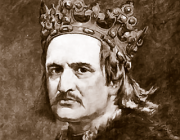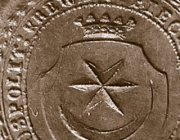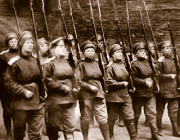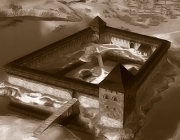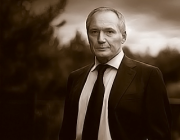“The Small Gate will be in keeping with the tradition of arches”. The main discoveries and challenges of the restoration of Kreva Castle this season
 24 October 2023
24 October 2023
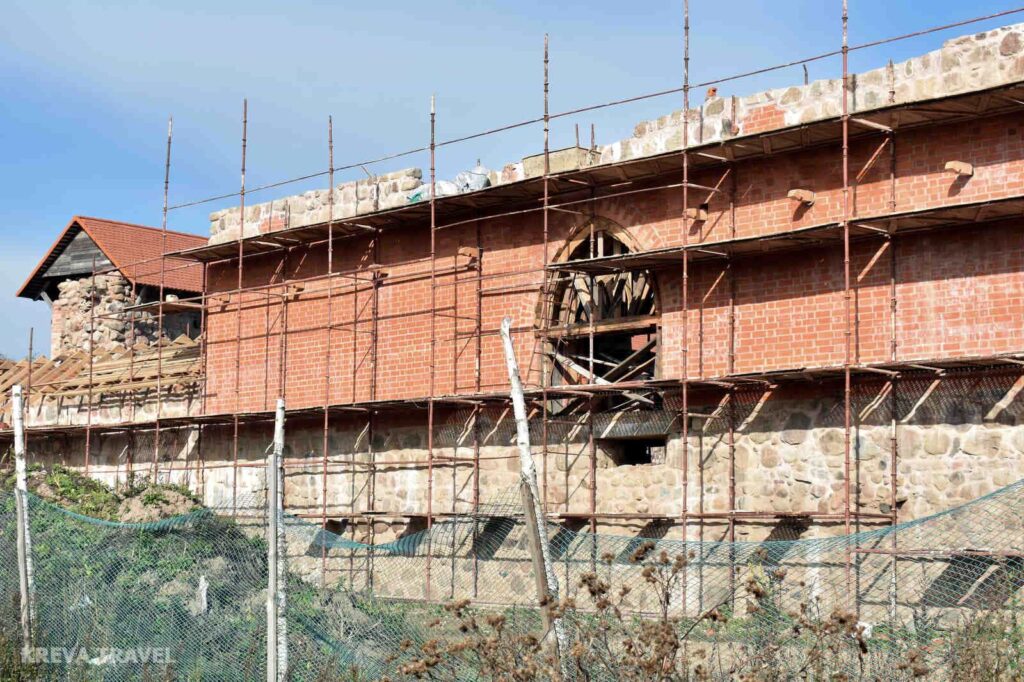
As it happens, the current season of restoration work at Kreva Castle has been quite long: it started in February and has not been finished yet. During this time, the restorers have decided how the Small Gate will look like, dismantled the emergency dugout next to it, and restored the pillbox in the Small Tower. And the main discovery of the 2023 season – experts have come to the conclusion that the castle may have had a third tower.
Aleh Dziarnovich, head of research, researcher at the Institute of History of the National Academy of Sciences of Belarus, told which works caused more discussion and when to wait for the official confirmation: the Kreva Castle had not two towers, as it is commonly believed, but three. And was this information even mentioned before? Before moving on to discuss the main results of this season, Alex notes:
– I’m going to go to Kreva soon, because I have two tasks. Firstly, some work on the castle involving the land requires supervision. Secondly, late autumn and early spring is the time for archaeological exploration. We are going to go looking for interesting things in the neighbourhood, in the hills, when the leaves are off the trees and there is a good view.
The drawing with the third tower was published in a Warsaw magazine in 1938. Who is its author?
Of course, the main and significant discovery of this year is the view that the castle had a third tower. How is it that previously these words could have been taken for fantasy, but now there is every reason to believe that the castle did not look as we had imagined for many years?
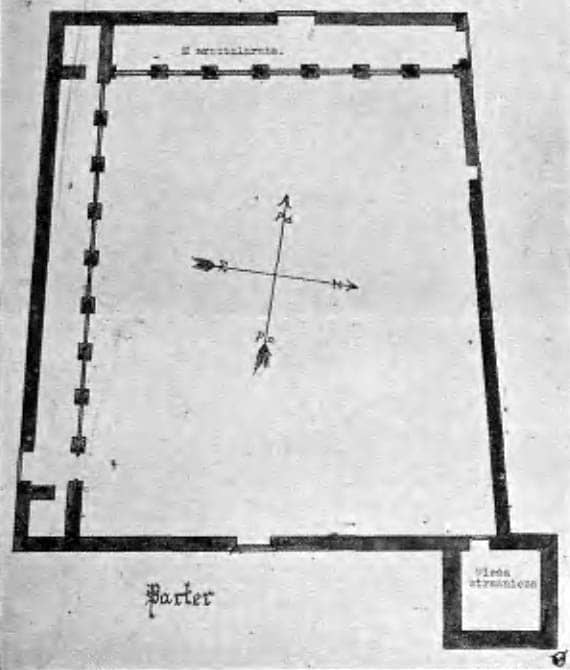
– There is a strange plan of some architect B. Abukhovich. It is not known who he is. This drawing was published in 1938 in the Warsaw magazine “Zemia” together with an article on Kreva Castle. What is interesting is that Abukhovich proposed his own reconstruction of the castle, which shows the third tower, and between it and the Small Tower – a gallery, – says Aleh Dziarnovich. – I had seen this plan before, but I considered it a fantasy, as there was no reason to believe that there could have been a tower in that corner.
According to the interlocutor, the situation changed in 2020, when during work on the north-eastern wall found a fragment of brickwork. Why is this important? Because bricks were used only in some crucial moments: in the construction of individual corners of the castle, arches, window openings. Consequently, there was a building near this wall.
– We did not know its function and purpose, we thought it was some kind of stone building. Next season we will be able to answer exactly what it is. But I am inclined to the version that it is the third tower, – comments the expert. – There is a second archival evidence in favour of this idea. During the World War Two, the Nazi administration transferred these territories to the administration of the Lithuanian General District with Kaunas as its capital. Archival materials from those times have recently become available.
There are sketches: in 1942 two Lithuanian architects, Makarewicz and Salialonis, came to Kreva and sketched the castle. Apparently, after the work of Polish conservators, they clearly saw the cleared north-east corner, something more than we did in the era of the 1980s and 1990s.
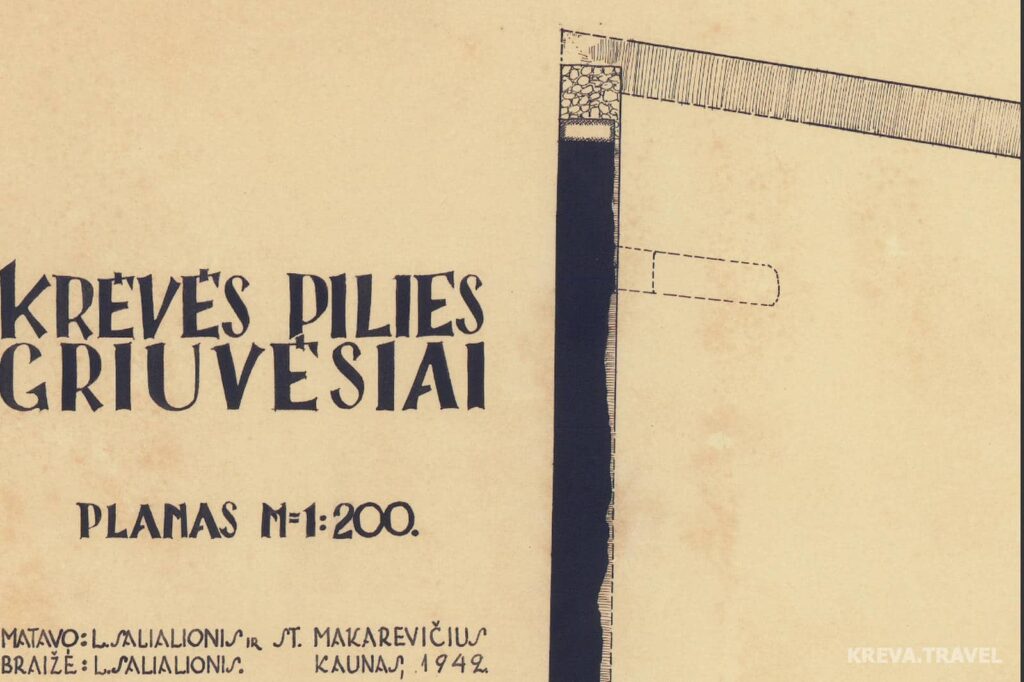
The question remains unanswered: did the Poles conduct archaeological research during the conservation of the castle after the World War One? No information is available. But when we was working at the main gate, we saw traces of digging. So there was excavation work. We were able to successfully tie in with preliminary information: archival and GPR information, surveys from 2021. We calculated 12 metres from the corner, laid a trench and reached the stone foundation.
When and why was the third tower destroyed?
So far, we have not been able to open a large wall in the foundation – it is a large amount of work, and there is also the issue of financing.
– We have notes and sketches made in the interwar period in the middle of the 20th century. On them this wall is very clearly marked. Thanks to topographic methods, we can say that this building (presumably the third tower) was on exactly the same line and with the same parameters as the Small Tower, Aleh Dziarnovich says. – First, under Gedymin, they began to build the castle walls, later they only added the Princes’ Tower, and it was already decorated during the times of Alherd and Jahaila.
And at the end of the XIV century a new tower could be built. First the Small Tower, and then a tower with the same parameters in the opposite corner, which we conventionally call the third. When clearing the Small Tower we came to the remains of several tunnel steps inside the tower.
The way I see it: when Prince Svidryhaila stormed the Kreva Castle in 1433, he may have broken through near the tower we found. It was destroyed then and was not rebuilt, so it remained in the foundations. That is why nobody could draw and remember it later. The small tower was rebuilt, but the tunnel was not. It was simply filled in, covered with stones.
“Small Gate will be interesting and adequate.”
While the disclosure of the main intrigue will have to wait, we invite Alex to tell us about other results of this season. For example, the Small Gate of Kreva Castle is being bricked up.
– Also, the foundation for the German DOP (long-term firing point) is being restored, it is planned to finish all the works on it by the end of the year, – says our interlocutor. – The DOP in the Small Tower has been restored. It is assumed that there will be an exposition devoted to the First World War. In addition, the tunnel with stairs should be conserved. When we discovered them last year, it aroused the interest of both architects and the local Smarhon authorities. It was decided not just to preserve them, but to exhibit them. The stairs will be preserved under glass, possibly placed under a glass case.
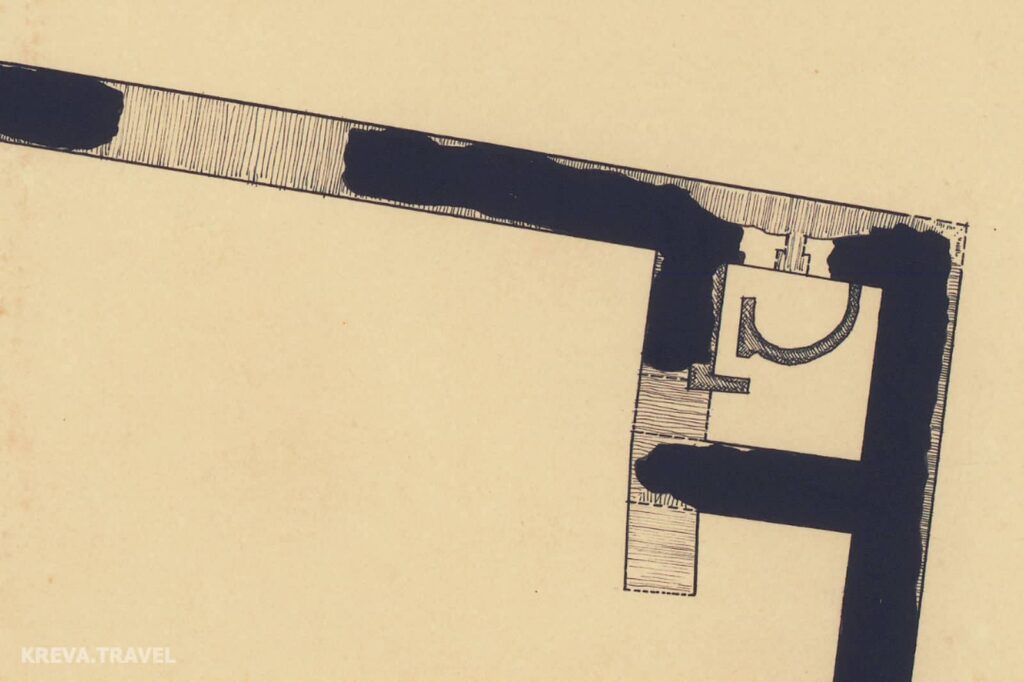
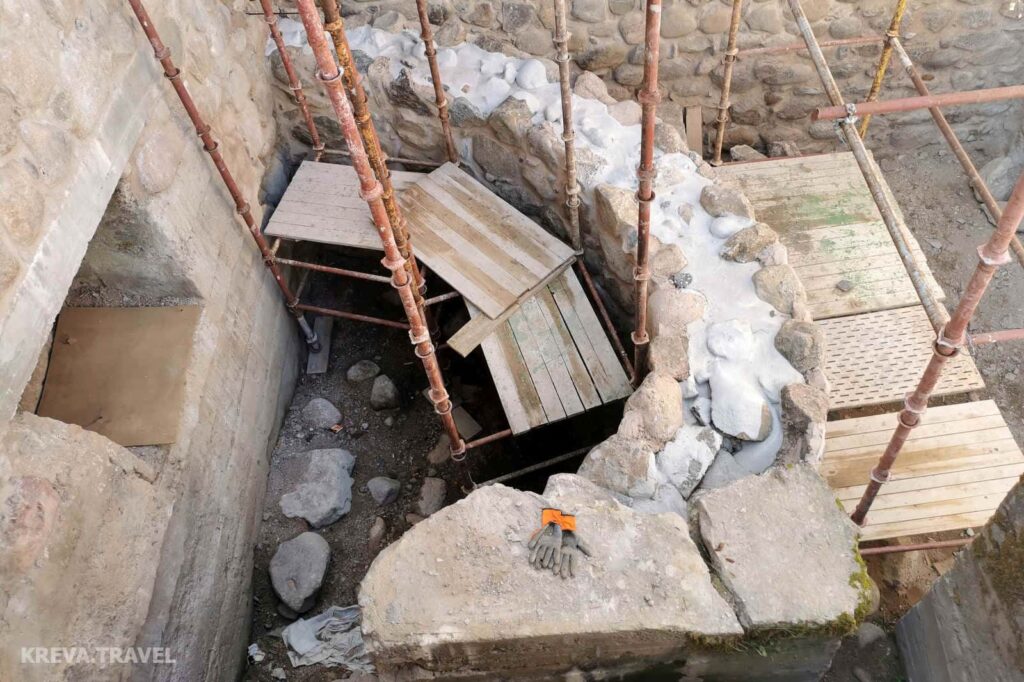
– And as for the restoration of the Small Gate – does it not cause such a discussion as the main one?
– The Small Gate will be very interesting and adequate, – consoles Aleh Dziarnovich. – Their photos from the times of the World War One have been preserved, the exact location of the Small Gate has been determined, thanks to research we can understand the configuration of the archway. They will have a slight lancet.
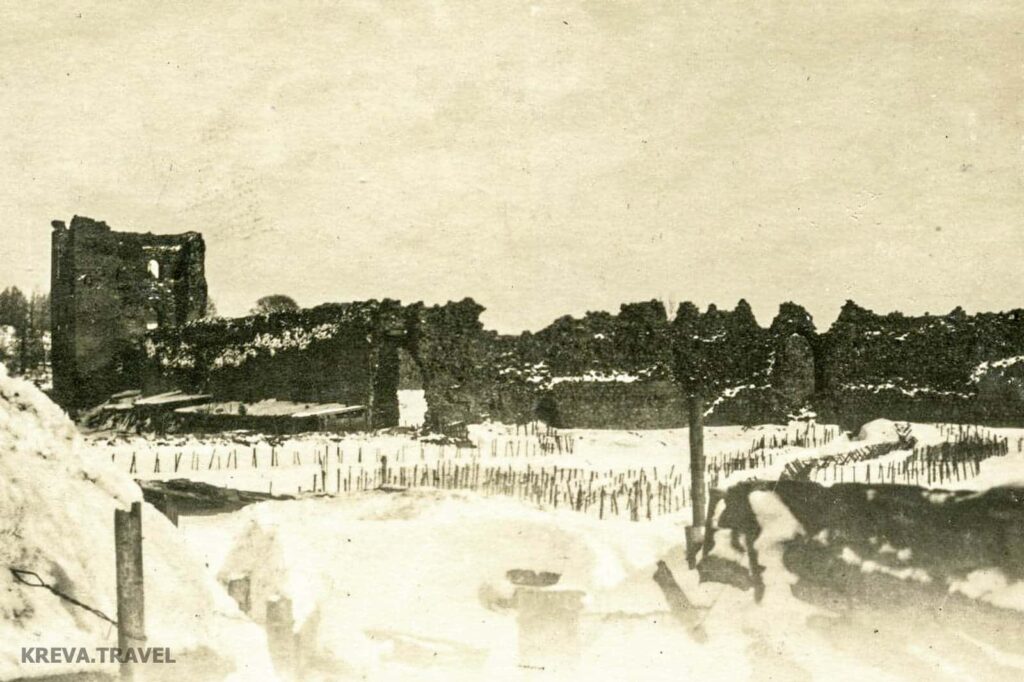
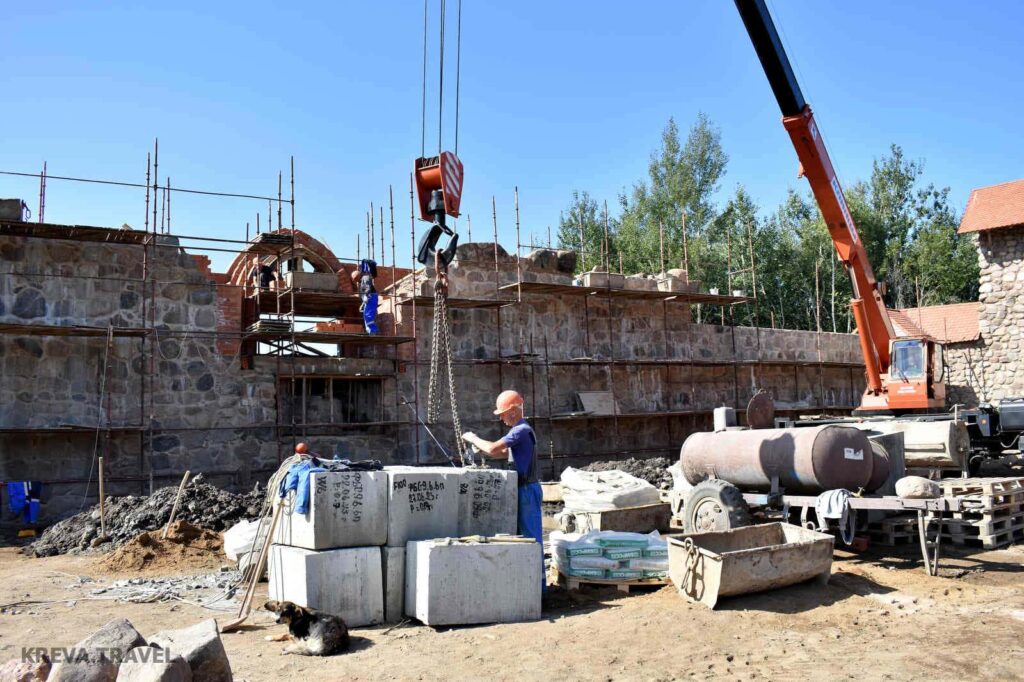
We can argue about the Main Gate, how correctly it was restored and why it was made semi-circular. Of course, the Gothic style could have used semi-circular forms, but all the arches of Kreva Castle that we know from iconography and research have a slight lancet shape. So I really appreciate the works that are now underway on the Small Gate. They will follow the tradition of the arches that were in Kreva Castle.
What problems arise while working in the castle?
Many parts of the castle are in a state of disrepair. When we opened the German dugout at the Small Gate, we had to work with supports – it collapsed. It was dismantled, stones were laid separately, and in September the foundation was made. They plan to restore it as it was before – a semicircular structure adjacent to the castle wall.
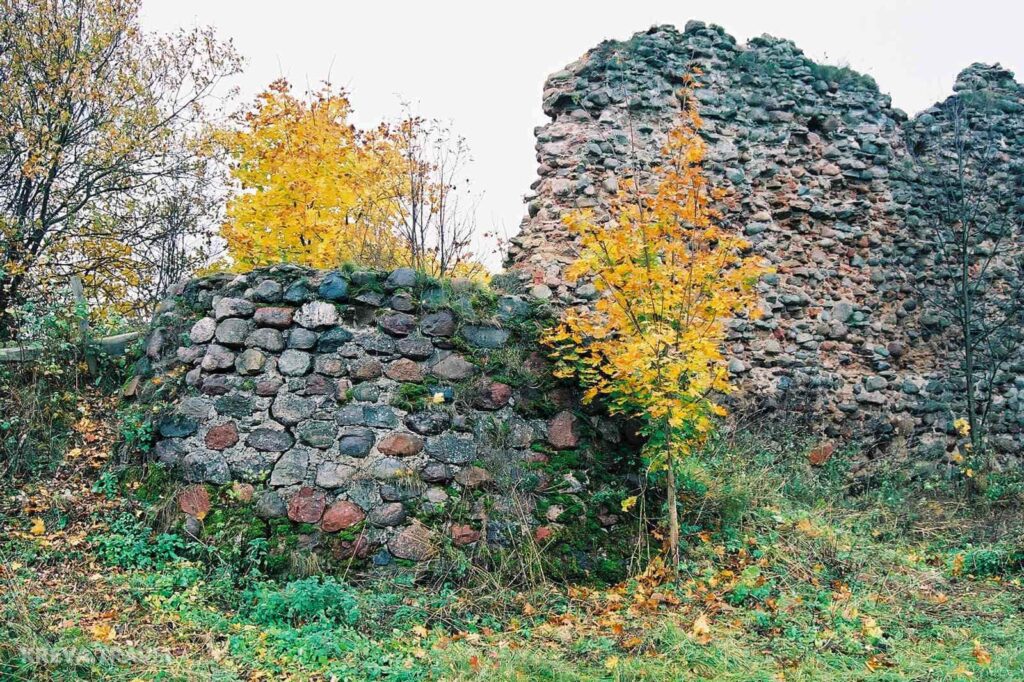
– Restoration issues arose during the season. The gates are always built high in the wall, and wooden bridges are made to them, while here there is a bunker. There were problems: how to combine it? Because Kreva Castle is not only a monument of the Middle Ages, but also an object of memory of the World War One. We decided to carry out the work in such a way as to leave traces of the war and commemorate that era, including through the historical landscape. There are craters on the castle territory, they were decided to leave them. Why are they treated so responsibly and carefully? The castle is a complex object, it bears the imprints of different eras. For example, we decide to rebuild only the castle of the XIV century. That’s fine. But what was it like? – Aleh Dziarnovich asks a question.
– At first there was only one tower, and at the end of the XIV century there was a second tower. As we now assume, there may have been a third. Also frescoes of XIV and XV centuries have reached us. So what should the castle look like during the reconstruction? Do we have the right to ignore the war period? Firstly, it made such an imprint on the fate of the castle. Secondly, it is a very important page of history for us. The theme of war, especially in a region that was divided by front lines, is very important. I don’t think it can be ignored. That’s why the concept of conservation and restoration was adopted, taking into account the preservation of authentic 14th and 15th century construction and wartime objects.
What to expect next year
– Everything will depend on funding. But it is the eastern wall, the most destroyed one, that needs the most attention. It should be under conservation next season, – says Aleh Dziarnovich. – It is also necessary to open the corner where, in our opinion, was the third tower, and also to reconstruct the donjon. This is a financially complicated business, because the donjon will actually cost half of the preservation of the whole castle. What else is in the plans? Attention will be paid to the territory around the castle. In two places it is planned to restore the line of moats. Specialists even want to partially run water to show how it flowed through the castle itself.
Support Kreva.Travel!

